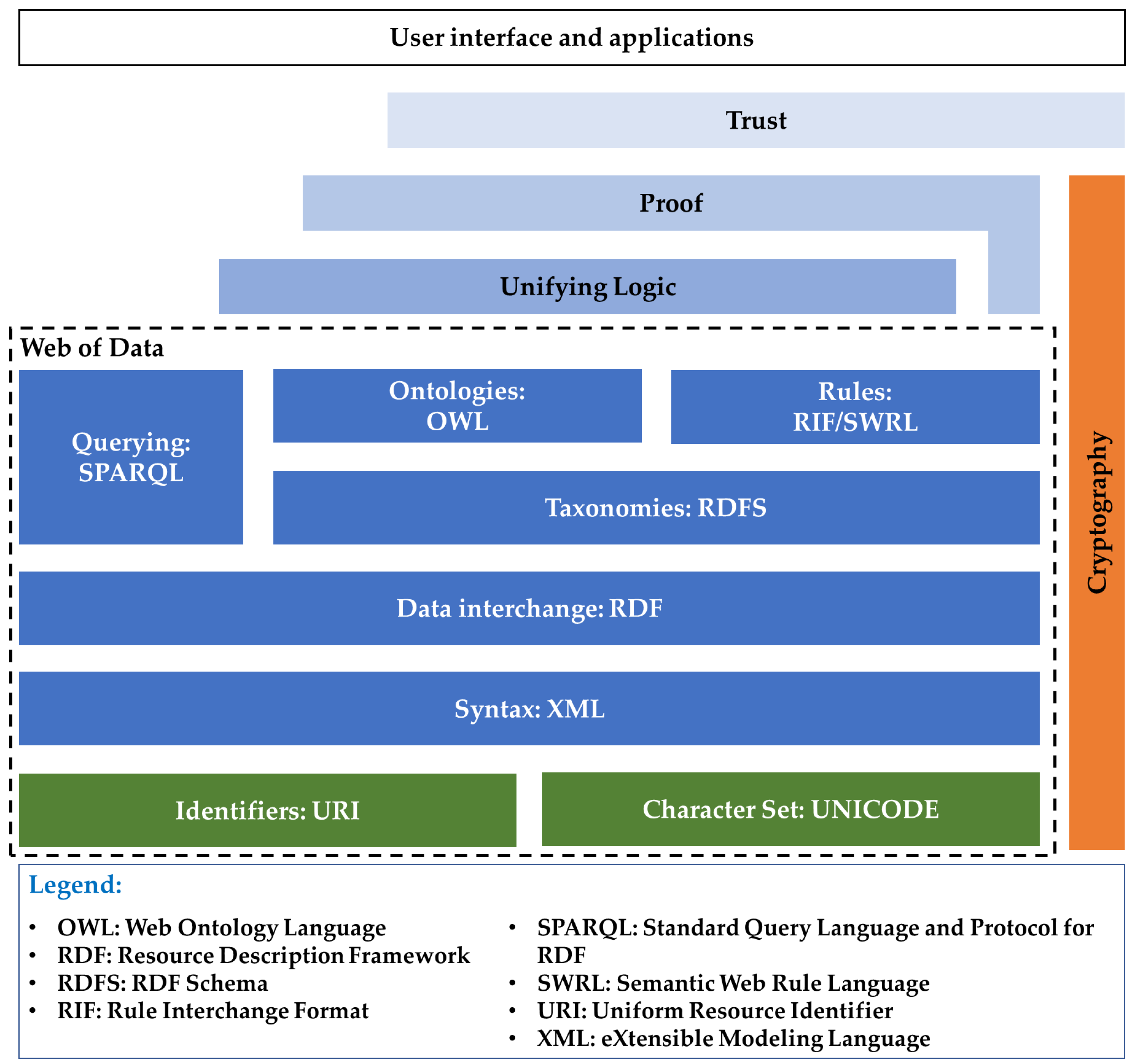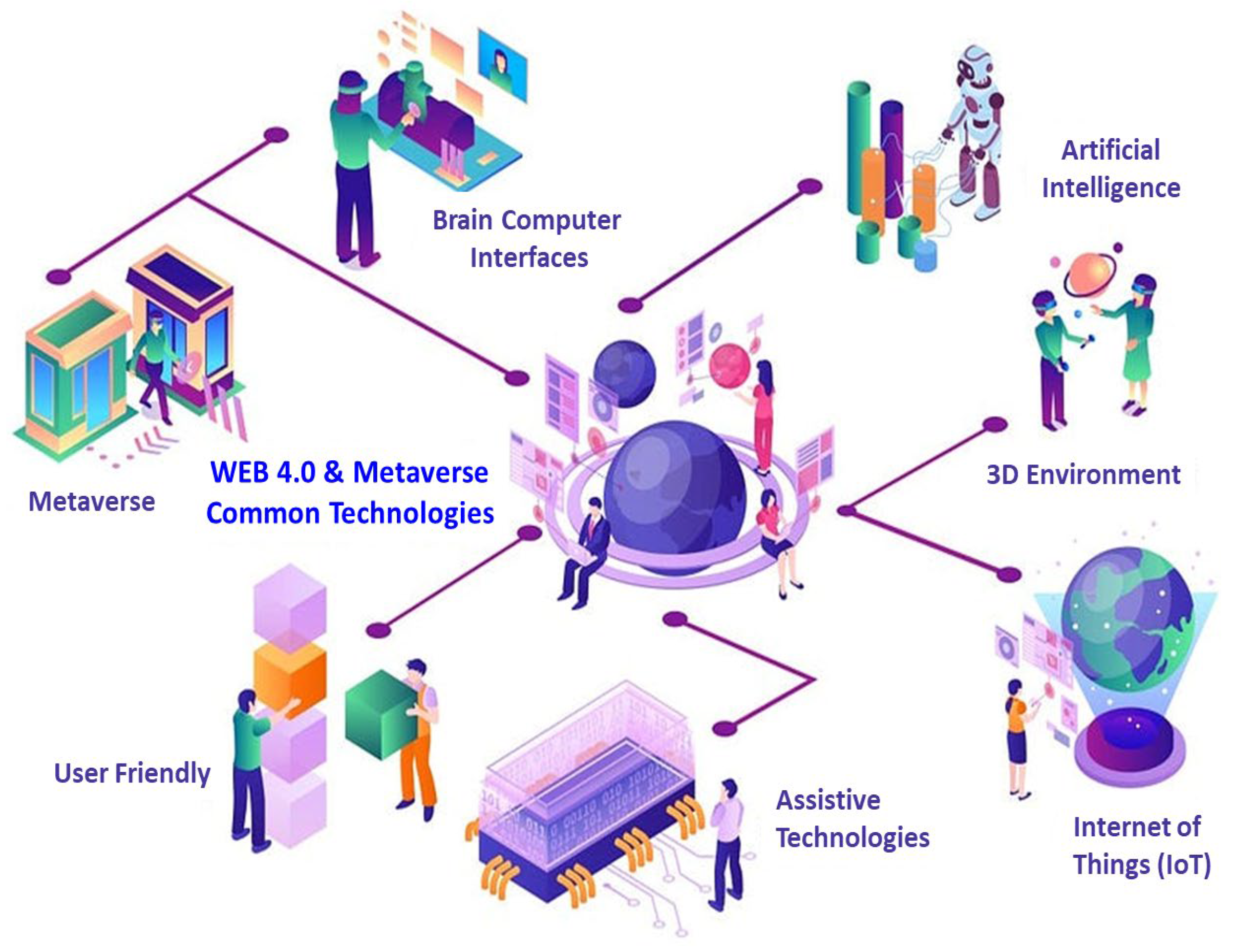
| Version | Summary | Created by | Modification | Content Size | Created at | Operation |
|---|---|---|---|---|---|---|
| 1 | Dimitris Mourtzis | -- | 1575 | 2023-09-05 04:44:25 |
Video Upload Options
In the context of Industry 5.0, the concept of the Metaverse aligns with the vision of Web 4.0, representing a digital ecosystem where individuals and organizations collaborate in a human-centric approach to create personalized value. This virtual universe connects multiple interconnected worlds, enabling real-time interactions between users and computer-generated environments. By integrating technologies like artificial intelligence (AI), virtual reality (VR), and the Internet of Things (IoT), the Metaverse within Industry 5.0 aims to foster innovation and enhance productivity, efficiency, and overall well-being through tailored and value-driven solutions. Therefore, this entry explores the concept of the Metaverse in the context of Industry 5.0, highlighting its definition, evolution, advantages, and disadvantages. It also discusses the pillars of technological advancement, challenges, and opportunities, including its integration into manufacturing. The entry concludes with a proposal for a conceptual framework for integrating the human-centric Metaverse into manufacturing.
1.1. World Wide Web (WWW): From Web 1.0 to Web 3.0

1.2. Web 4.0 and the Metaverse
1.3. Web 4.0 and the Metaverse Need

-
The online environment has to be consistently connected, enabling constant interaction. Users can connect with one another;
-
The emerging web functions as a unified Web OS, where information seamlessly transfers between various points within the system;
-
Background processes involve self-learning AI systems that strive to comprehend users, mimicking human communication patterns;
-
It engages users through interpersonal communication methods, much like human interactions;
-
It embodies an intelligent, interconnected, and open web structure;
-
The speed and dependability of Web 4.0 exceed previous standards;
-
It necessitates ubiquity, identity, and connectivity as fundamental prerequisites.
| Web Version | Description | Technical Aspects | Application Examples |
Reference |
|---|---|---|---|---|
| Web 1.0 | Static, read-only web content | Basic HyperText Markup Language (HTML) and Cascade Styling Sheet (CSS) for layout; | Early websites, online encyclopedias | [15] |
| Web 2.0 | Interactive, user-generated content | Asynchronous JavaScript and XM (AJAX) for real-time interactivity | Social media platforms, Wikipedia, YouTube | [16] |
| Web 3.0 | Semantic web, machine-understandable data | Resource Description Framework (RDF), ontologies, metadata for semantic understanding | Linked data projects, semantic search engines | [17] |
| Web 4.0 | AI-driven, immersive and personalized experiences | Artificial intelligence (AI), Internet of Things (IoT) integration, virtual reality, blockchain potential | AI virtual assistants, mixed reality applications | [13] |
1.4. Human-Centric Metaverse Challenges
1.5. Contribution of the Paper
1.6. Manuscript Structure
References
- Mystakidis, S. Metaverse. Encyclopedia 2022, 2, 486–497.
- Aloqaily, M.; Bouachir, O.; Karray, F.; Ridhawi, I.A.; Saddik, A.E. Integrating Digital Twin and Advanced Intelligent Technologies to Realize the Metaverse. IEEE Consum. Electron. Mag. 2022, 1–8.
- Mourtzis, D.; Panopoulos, N.; Angelopoulos, J. Production management guided by industrial internet of things and adaptive scheduling in smart factories. In Design and Operation of Production Networks for Mass Personalization in the Era of Cloud Technology; Elsevier: Amsterdam, The Netherlands, 2022; pp. 117–152.
- Qin, H.X.; Wang, Y.; Hui, P. Identity, Crimes, and Law Enforcement in the Metaverse. arXiv 2022, arXiv:2210.06134.
- Wang, F.Y.; Qin, R.; Wang, X.; Hu, B. MetaSocieties in Metaverse: MetaEconomics and MetaManagement for MetaEnterprises and MetaCities. IEEE Trans. Comput. Soc. Syst. 2022, 9, 2–7.
- Mourtzis, D.; Panopoulos, N.; Angelopoulos, J.; Wang, B.; Wang, L. Human centric platforms for personalized value creation in metaverse. J. Manuf. Syst. 2022, 65, 653–659.
- Berners-Lee, T.; Hendler, J.; Lassila, O. The semantic web. Sci. Am. 2001, 284, 34–43.
- Aghaei, S.; Nematbakhsh, M.A.; Farsani, H.K. Evolution of the world wide web: From WEB 1.0 to WEB 4.0. Int. J. Web Semant. Technol. 2012, 3, 1–10.
- Polona, C.A.R.; André, M.T.; Maria, N. Metaverse: Opportunities, Risks and Policy Implications. 2022. Available online: https://www.europarl.europa.eu/thinktank/en/document/EPRS_BRI(2022)733557 (accessed on 25 July 2023).
- Mourtzis, D.; Angelopoulos, J.; Panopoulos, N. The Future of the Human–Machine Interface (HMI) in Society 5.0. Future Internet 2023, 15, 162.
- Bertuzzi, L. LEAK: EU Commission to Set Out Its Vision on the Metaverse, Web 4.0, EURACTIV. 2023. Available online: https://www.euractiv.com/section/platforms/news/leak-eu-commission-to-set-out-its-vision-on-the-metaverse-web-4-0/ (accessed on 20 July 2023).
- Metaverse Market by Component, Vertical and Region—Global Forecast to 2027. Market Research Report 2022. Available online: https://www.marketsandmarkets.com/Market-Reports/metaverse-market-166893905.html?gclid=CjwKCAjwoqGnBhAcEiwAwK-OkaLifxbj9JphDw88AoKfBZTkmaFs3l9_XSmstcbHnoKJ3gZCcHqCBRoClKsQAvD_BwE (accessed on 18 July 2023).
- Almeida, F. Concept and dimensions of web 4.0. Int. J. Comput. Technol. 2017, 16, 7.
- Zhou, Z.; Li, Z.; Zhang, X.; Sun, Y.; Xu, H. A Review of Gaps between Web 4.0 and Web 3.0 Intelligent Network Infrastructure. arXiv 2023, arXiv:2308.02996.
- Ibrahim, A.K. Evolution of the Web: From Web 1.0 to 4.0. Qubahan Acad. J. 2023, 1, 20–28.
- Khanzode, C.A.; Sarode, R.D. Evolution of the world wide web: From web 1.0 to 6.0. Int. J. Digit. Libr. Serv. 2016, 6, 1–11.
- Nath, K.; Dhar, S.; Basishtha, S. Web 1.0 to Web 3.0-Evolution of the Web and its various challenges. In Proceedings of the 2014 International Conference on Reliability Optimization and Information Technology (ICROIT), Faridabad, India, 6–8 February 2014; pp. 86–89.
- George, A.S.H.; Maschio, F.; Shaji, G.; Baskar, T.; Digvijay, P. Metaverse: The next stage of human culture and the internet. Int. J. Adv. Res. Trends Eng. Technol. 2021, 8, 1–10.
- Towards the Next Technological Transition: Commission Presents EU Strategy to Lead on Web 4.0 and Virtual Worlds. 2023. Available online: https://ec.europa.eu/commission/presscorner/detail/en/ip_23_3718 (accessed on 25 July 2023).
- EU Competitiveness beyond 2030: Looking Ahead at the Occasion of the 30th Anniversary of the Single Market. 2023. Available online: https://ec.europa.eu/commission/presscorner/detail/en/ip_23_1668 (accessed on 25 July 2023).
- Europe’s Digital Decade. 2023. Available online: https://digital-strategy.ec.europa.eu/en/policies/europes-digital-decade#tab_2 (accessed on 18 July 2023).




